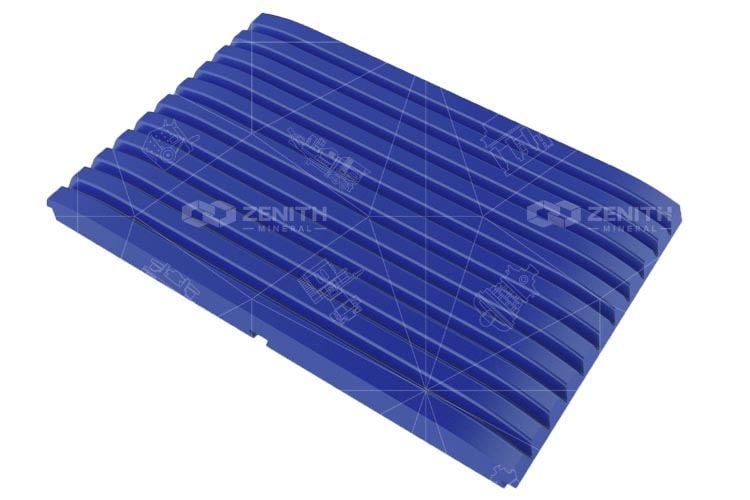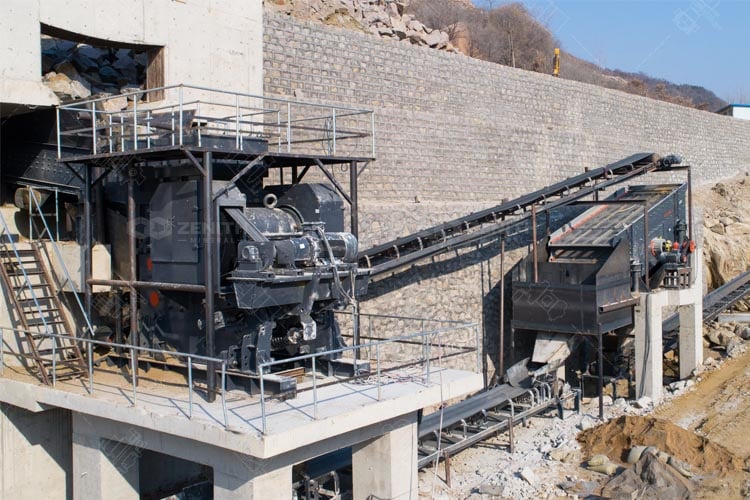It’s important to choose the right jaw profile for your application. An incorrect jaw profile can lead to increased downtime through excess wear, lower efficiency and capacity, or even breakage of the crusher. However, choosing the most appropriate jaw profile for the primary crushing application can be tricky, since each application has several different variables such as feeding, opening and feed material properties. Here are some tips for how to choose the correct jaw profile for your application to get the most out of your crushing operation and achieve optimal production.

To achieve optimal production, it is important that the feed material fits into the chamber. The maximum feed size should be 80% of the nominal value of the feed opening. Since thicker liners take up more space, this also has an impact on the maximum size of the feed material that can be fed to the jaw crusher. It’s also important to consider the feed arrangement. This means that the feed divides evenly to the jaw, and that the jaw should be full so that the crusher operates optimally.
The type of feed material determines what type of jaw profile you should choose for your crushing application. Whether you have a soft or hard rock application or you are working in recycling, it’s important to choose a jaw profile that can crush the feed material efficiently. It’s also crucial to take account of issues such as the quantity of fines in the feed material, excessive humidity and lamellar material. Considering all these factors helps achieve better capacity, maintain an optimal chamber shape, and avoid backing or breaking the machine, leading to unwanted downtime.
Here are a few examples of the numerous applications and cases of what to consider when choosing the wear profile based on the feed material. The rule of thumb is to consider the crushability of the feed material and its characteristics.
For example, if you are crushing gravel, the crushability may be easy. For this purpose, we recommend the super grip or standard jaw to achieve the optimal result. For hard and abrasive feed material, it is ideal to choose a jaw profile that has design factors that withstand heavy wear. For example, a jaw profile with more wear-resistant manganese steel and a flat tooth profile are good options to consider when the feed material is very wearing.
To achieve the ideal outcome, the feed material should not contain fines. However, in some production cases, there may be no scalper available, or the scalping is inefficient, meaning the fine material ends up in the crushing chamber. For feed material with fines, a jaw profile with well-spaced teeth that let fines flow through is ideal. For example, coarse corrugated jaws are optimal, because the design allows for fine material to easily pass through the chamber. They are also optimal for feed that tends to break into slabs, reducing the amount of slabby material in the crusher discharge.

We have different types of jaw crusher for sale Philippines, such as PE series jaw crusher, PEW series jaw crusher, C6X series jaw crusher and mobile jaw crusher etc.

A jaw crusher is a type of primary crusher used in mines and ore processing plants. It reduces large aggregates to smaller aggregate. Jaw crushers are an excellent choice for primary crushing in a wide variety of applications.

Stone crusher for coarse crushing is an important driving force for the success of aggregate processing plant. Here are the tips to choose the most suitable coa
Fill your requirements here, and we'll send the custmized solution and quotation to you by the reserved contact information.